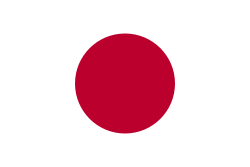Japan Unveils Advanced Railgun to Counter Hypersonic Missiles
 Japan
JapanTakeshi Ebisawa, a prominent leader of the Japanese Yakuza, has pleaded guilty to charges related to the trafficking of nuclear materials from Myanmar, which U.S. authorities allege were intended for use in Iran's nuclear weapons program. The 60-year-old criminal figure was initially charged in April 2022 with drug trafficking and firearms offenses before facing additional charges in February 2024 for conspiring to sell weapons-grade nuclear material.
In court, Ebisawa admitted to trafficking nuclear substances including weapons-grade plutonium and uranium, while also attempting to exchange large quantities of narcotics such as heroin and methamphetamine in return for military armaments, including surface-to-air missiles. The U.S. Justice Department highlighted that Ebisawa had access to significant quantities of nuclear materials, as evidenced by his discussions with undercover agents and seizure of materials during a sting operation.
The indictment further revealed that Ebisawa had plans to funnel profits from the nuclear sales into purchasing arms for an unnamed insurgent group in Myanmar. He could face a maximum sentence of 20 years in prison for his international trafficking activities.
As a leader of the Yakuza—a notorious organized crime syndicate—Ebisawa is implicated in extensive global criminal behavior, including narcotics and weapons trafficking. Sentencing for his guilty plea has yet to be scheduled by the court.
 Japan
Japan Japan
Japan Japan
Japan